Listen to this blog as a podcast:
There are big differences in wedding dress fabrics! Before you go shopping for your wedding dress, here is what you need to know to find the perfect one!
How to Choose the Perfect Wedding Dress Fabric
SEASON
If you are planning a summer wedding or a warm weather destination venue, you will want to look at a breathable lightweight fabric like chiffon. Those planning winter weddings do well with a heavier fabric like satin.
THEME/AESTHETIC
Having a formal ballroom event or a country barn venue? Headed to the tropics to tie the knot? Perhaps you want a Gatsby theme or a goth Halloween wedding? There is a right fabric to match with all of these!
SENSORY ISSUES
Brides with sensory issues will want to make sure they are not triggered with a textured fabric like velvet, or a thick or beaded lace that could scratch.
Now let’s learn about them!
Wedding Dress Fabrics
SATIN

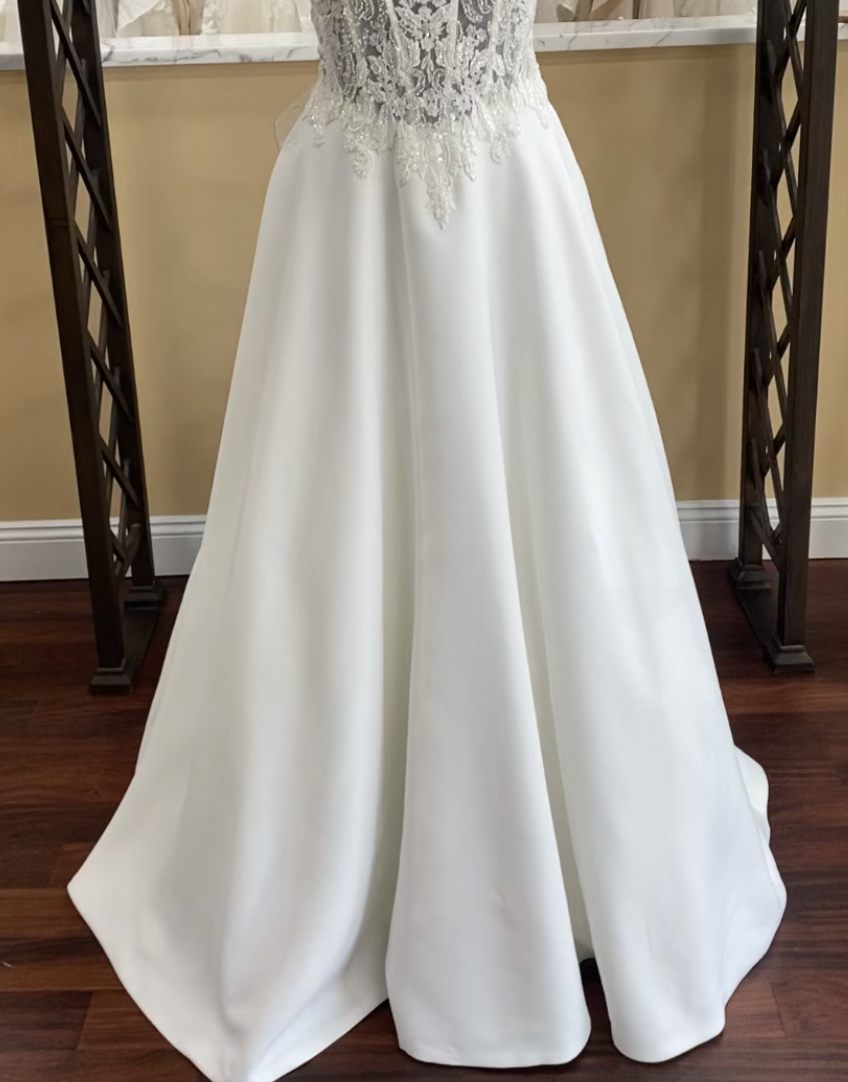
Although many mistake satin for a type of fiber, it actually refers to the finish of the dress. Satin is woven, giving it a shiny and luxurious finish. It can be made of rayon or silk fibers, but still be satin because of its shiny finish.
The satin fabric is a tried-and-true wedding fabric that has been popular across the ages for its smooth finish and durability. Because of its tightly woven consistency, satin is a great choice for every body type and it can be easily shaped for structured bridal gowns as well. Very formal (meaning very “bridal”), this fabric is a perfect choice for a formal affair and exudes elegance.
Beaded satin dresses are very glamorous and incredibly classic, also known as princess wedding dresses! Satin dresses are not only ballgowns however, they also make a very shapely fit and flare dress. Dresses in this fabric are typically in the colors white and ivory.
Note: White satin can have a bluish hue, make sure to see a large swatch if you are getting a white satin dress.
CHARMEUSE
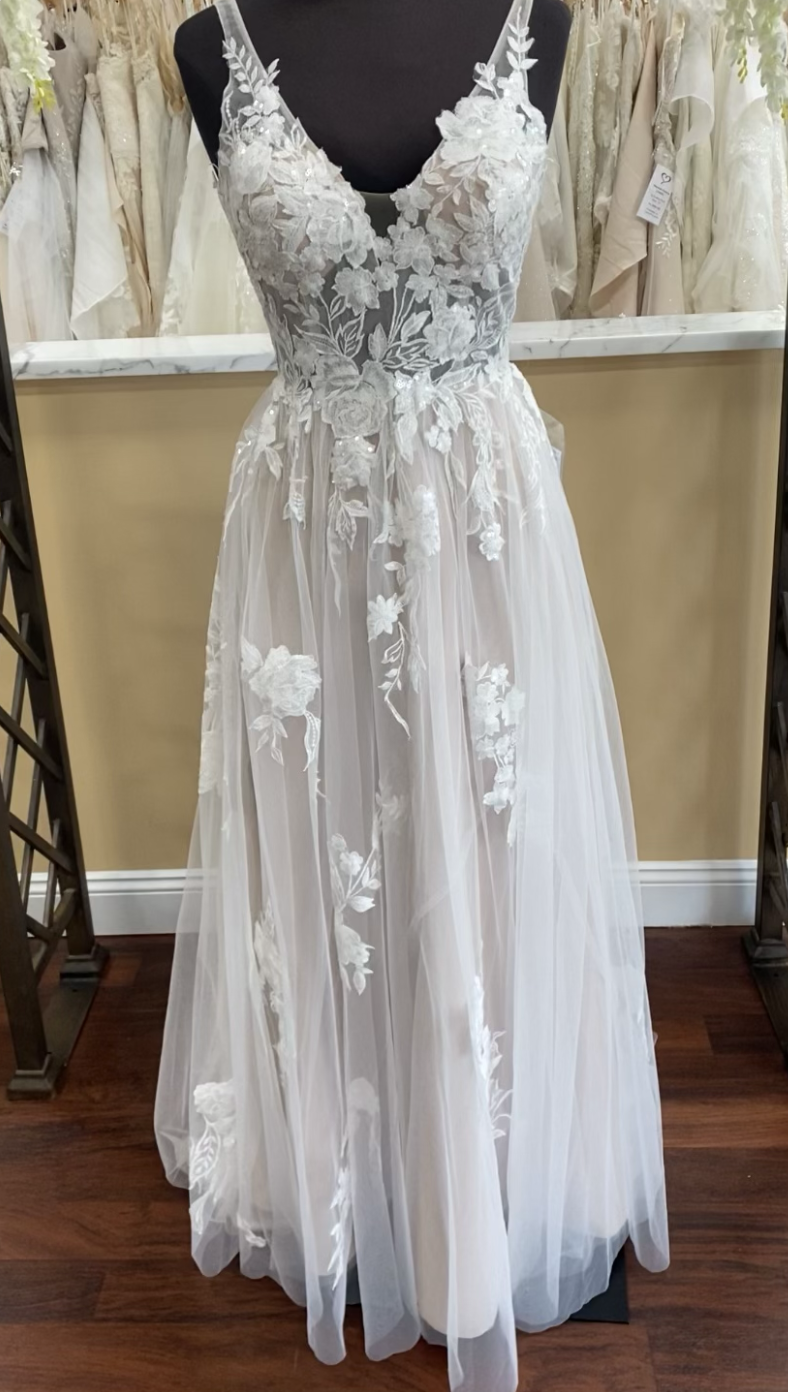
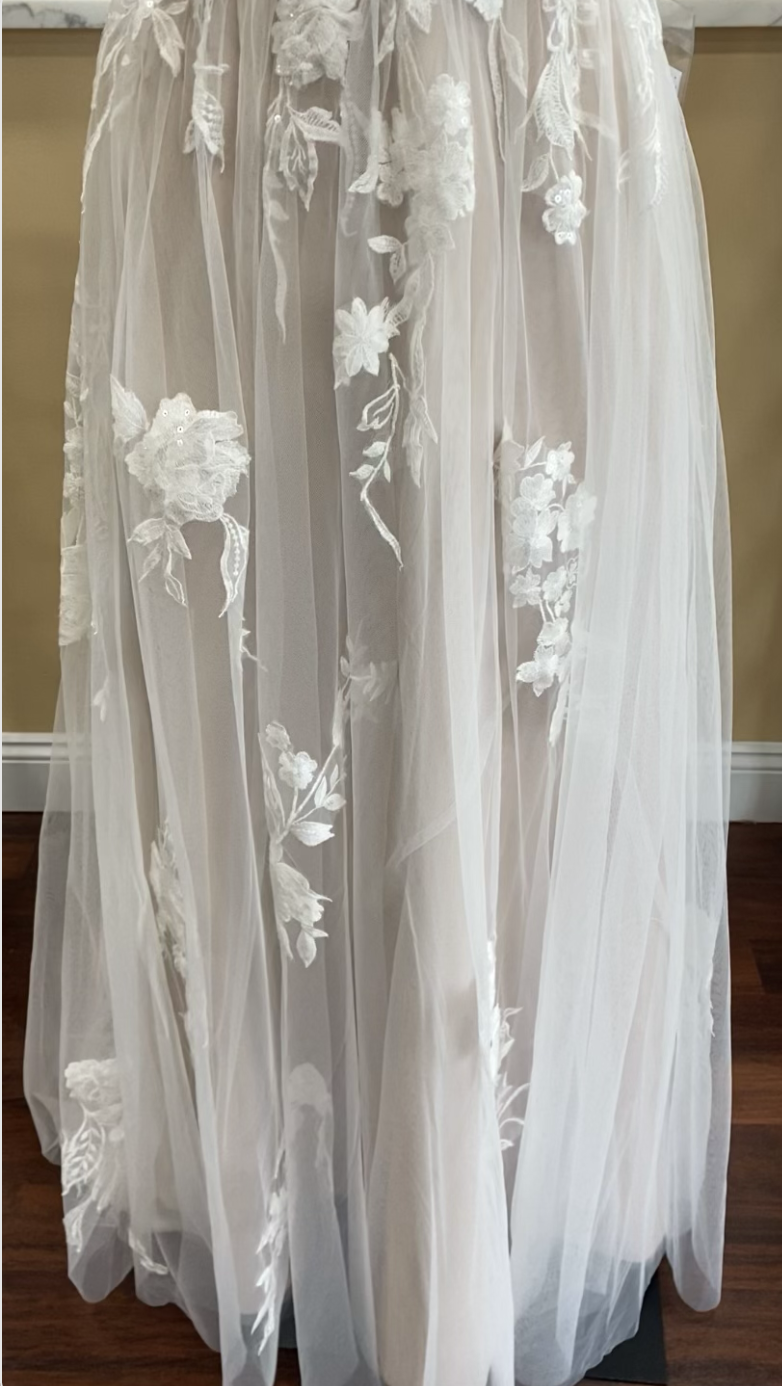
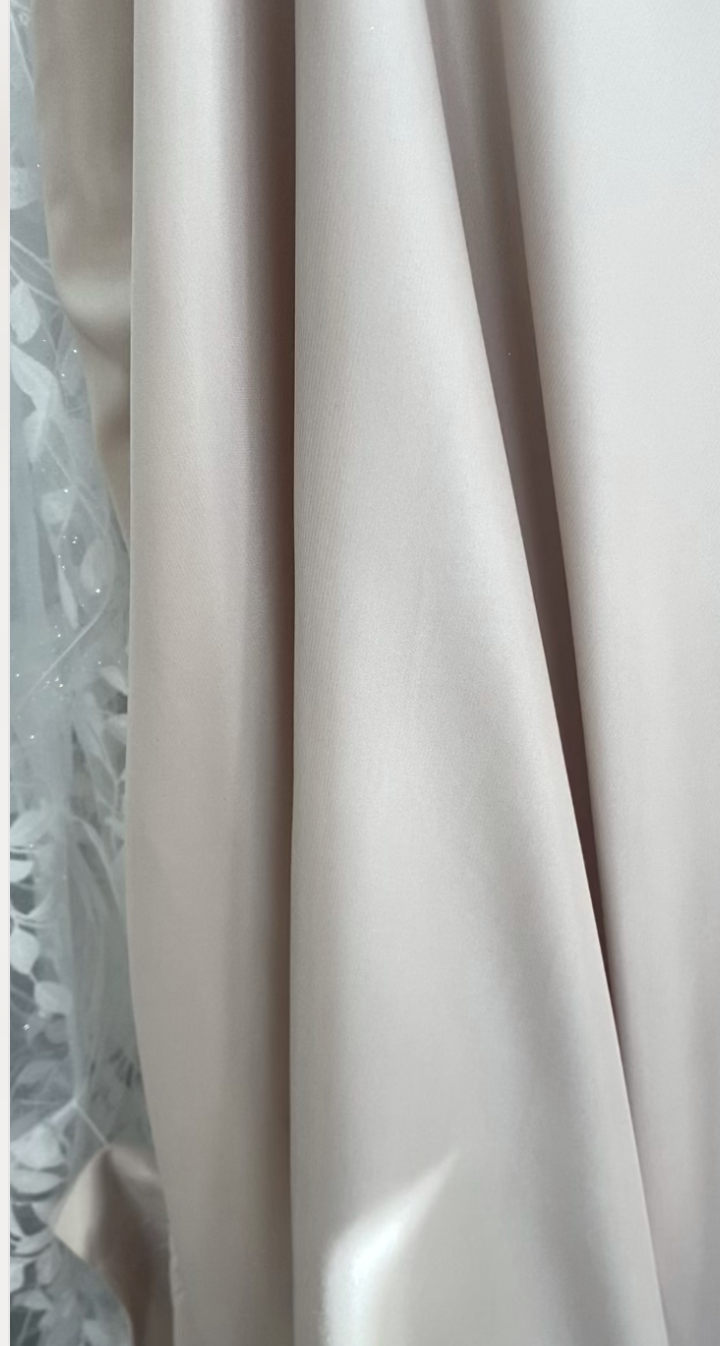
Charmeuse is a light satin making it the perfect fabric for dresses that drape, slink, and flow. This fabric is high-end and has a sophisticated sheen and has a slight stretch quality to it.It is exceptionally comfortable, very silky, and lightweight. These dresses are a popular choice for destination events, as they pack and travel easily yet still look rich and beautiful. Most often, charmeuse dresses have an overlay of light tulle with lace appliques.
Charmeuse is offered in a wide range of colors for bridal, including mocha, champagne, sand, and even lavender.
CHIFFON


Chiffon fabric is lightweight and woven, sheer and flowing. Because it is sheer, it is layered over itself or another fabric with more body.Although its lightness does lead it to snag easily, a well-made chiffon dress can create an ethereal, airy look for a bride’s big day. Brides looking for a more simple wedding dress lean toward chiffon, although chiffon dresses can also have splits in the skirt that lend a peek-a-boo quality!
Dresses in chiffon are also an excellent choice for destination or warm summer events. They are beautiful in curvy silhouettes and lend to a very clean, modern look. Chiffon wedding dresses for a bridal gown is typically in one color (light ivory) and have a sweep or chapel length train. Many bridesmaid dresses are made of chiffon and offered in a large choice of colors.)
ORGANZA

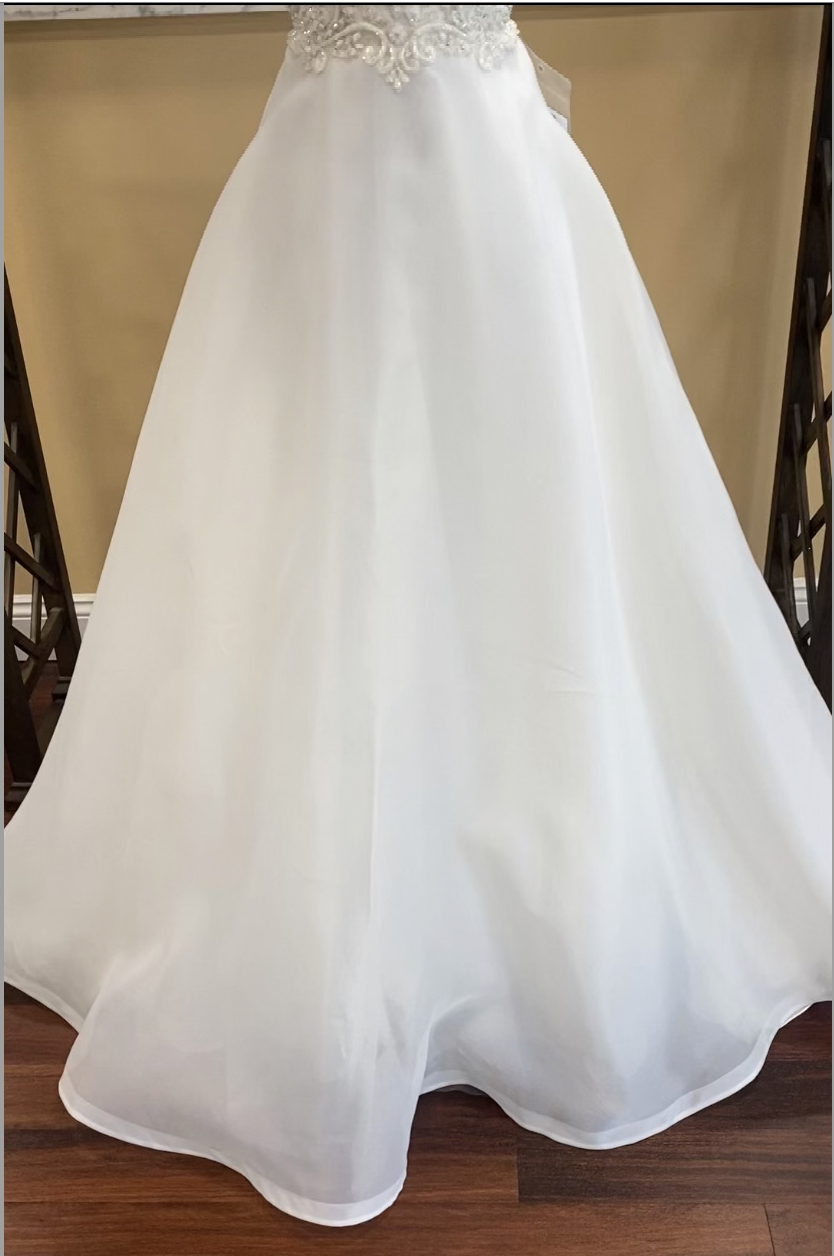
Similar to chiffon, organza is a relatively sheer material and lightweight woven fabric. However, unlike chiffon, organza has a stiffness that makes it a more natural choice for structured gowns with more shape.Organza is a delicate fabric and very romantic. Beaded organza and appliques look incredibly pretty and shimmery on this fabric. Organza is often used with layered or tiered skirts as a softer and less “pouffy” alternative to tulle. Most bridal stylists love showing off organza dresses, as they look beautiful on brides of all sizes.
While it can be extended, many organza wedding dresses will have a chapel length dress train.
CREPE
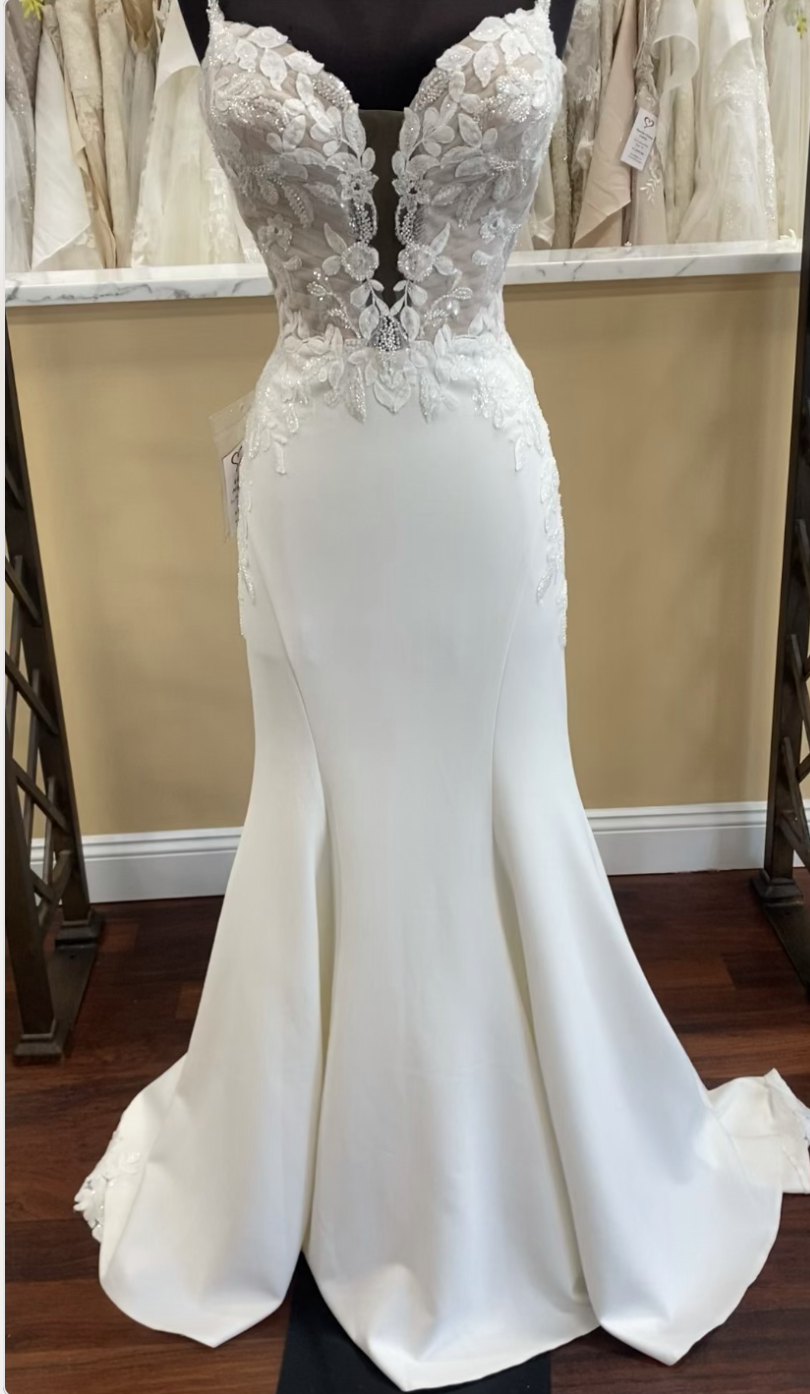
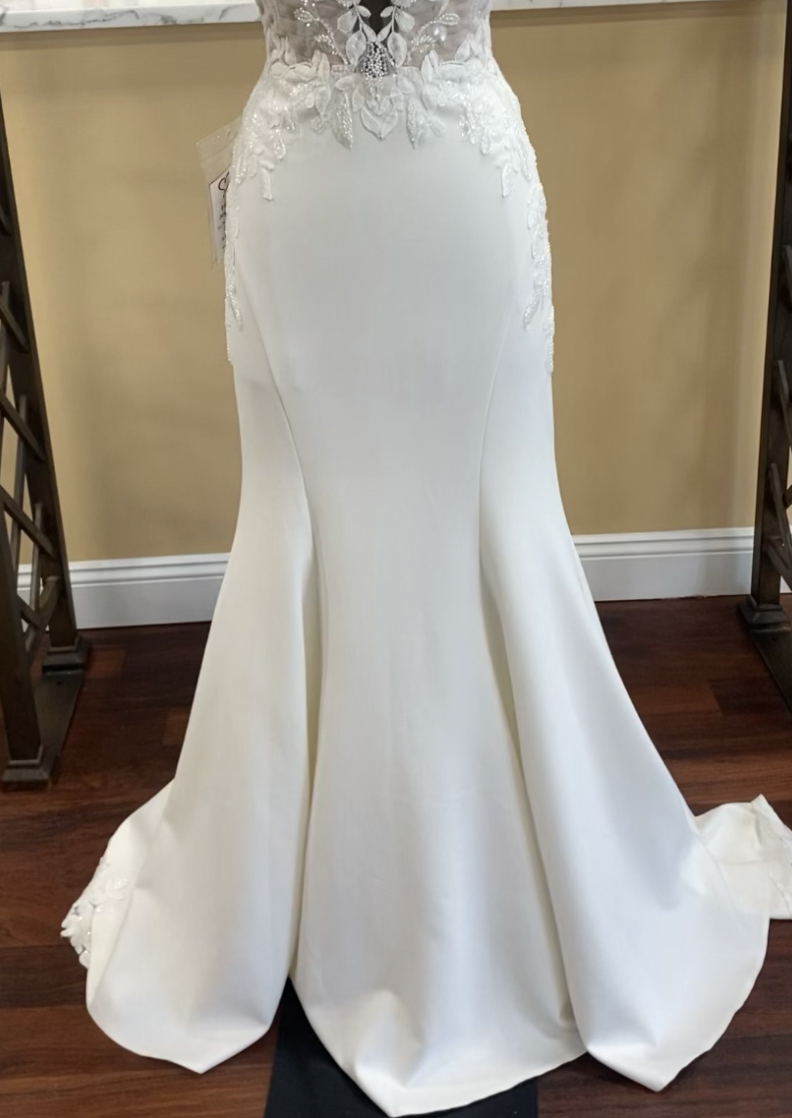
Crepe is a fabric that was traditionally made from silk or wool which is what gives some their “bumpy” appearance, but can now can be made from almost any fiber.
One of the best features of crepe is its matte finish giving it a modern and sophisticated vibe.Savvy designers have added a crepe georgette to their designs which is very popular because georgette adds elasticity while still keeping a great shape. It is soft, clean, and comfortable. Wedding dresses in crepe tend to be smooth, body-hugging and sexy! If you choose a crepe fabric, it will most likely say it is an ivory wedding dress, however, it is a bridal white ivory (not yellow).
Crepe is very on trend and one of the most popular wedding dress fabrics in our store this year.
TULLE
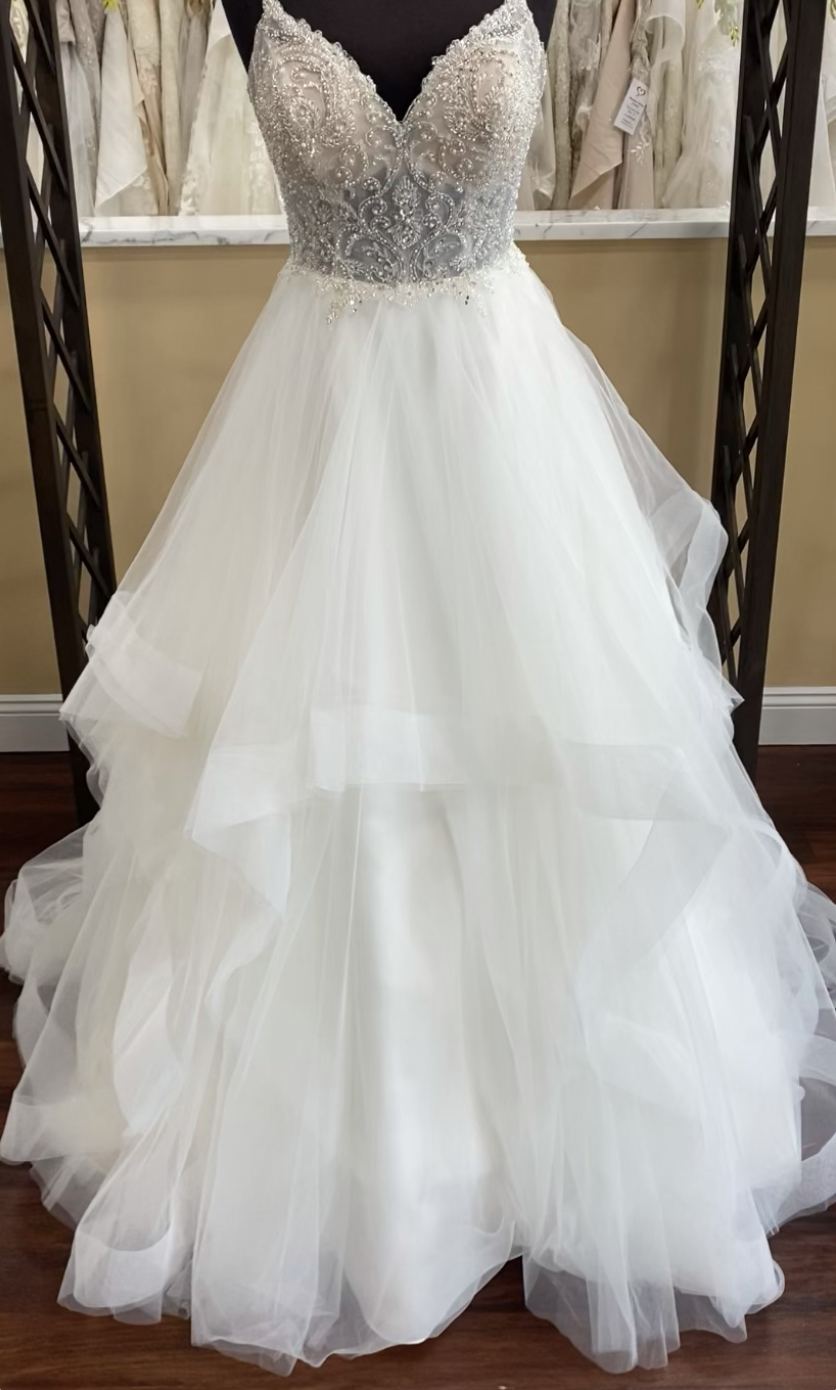
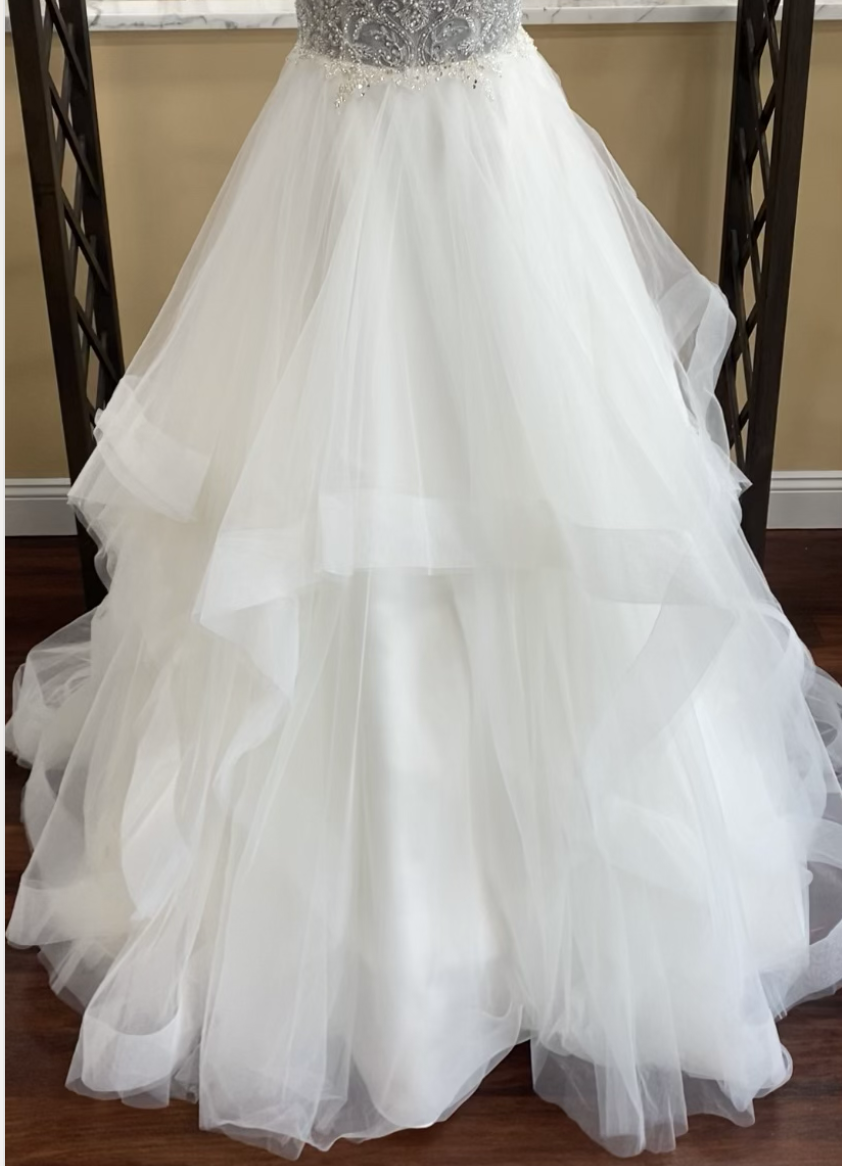
Tulle is a slightly stiff net fabrics that is often used in ballerina tutus and wedding veils. Tulle is an ideal choice for structured dresses or to give a dress with heavier, thicker fabric some lighter accents.
Like chiffon and organza, it’s important to be careful with tulle, as it is a sheer fabric that can snag or tear easily. It can be a bit scratchy for those with sensory issues or sensitive skin.
Tulle looks beautiful especially in curvy and plus size wedding dresses because of its structure. It is one of the best fabrics for ballgown and A-line silhouettes as it create the dramatic and voluminous skirts with tiers or layered with horsehair trim.
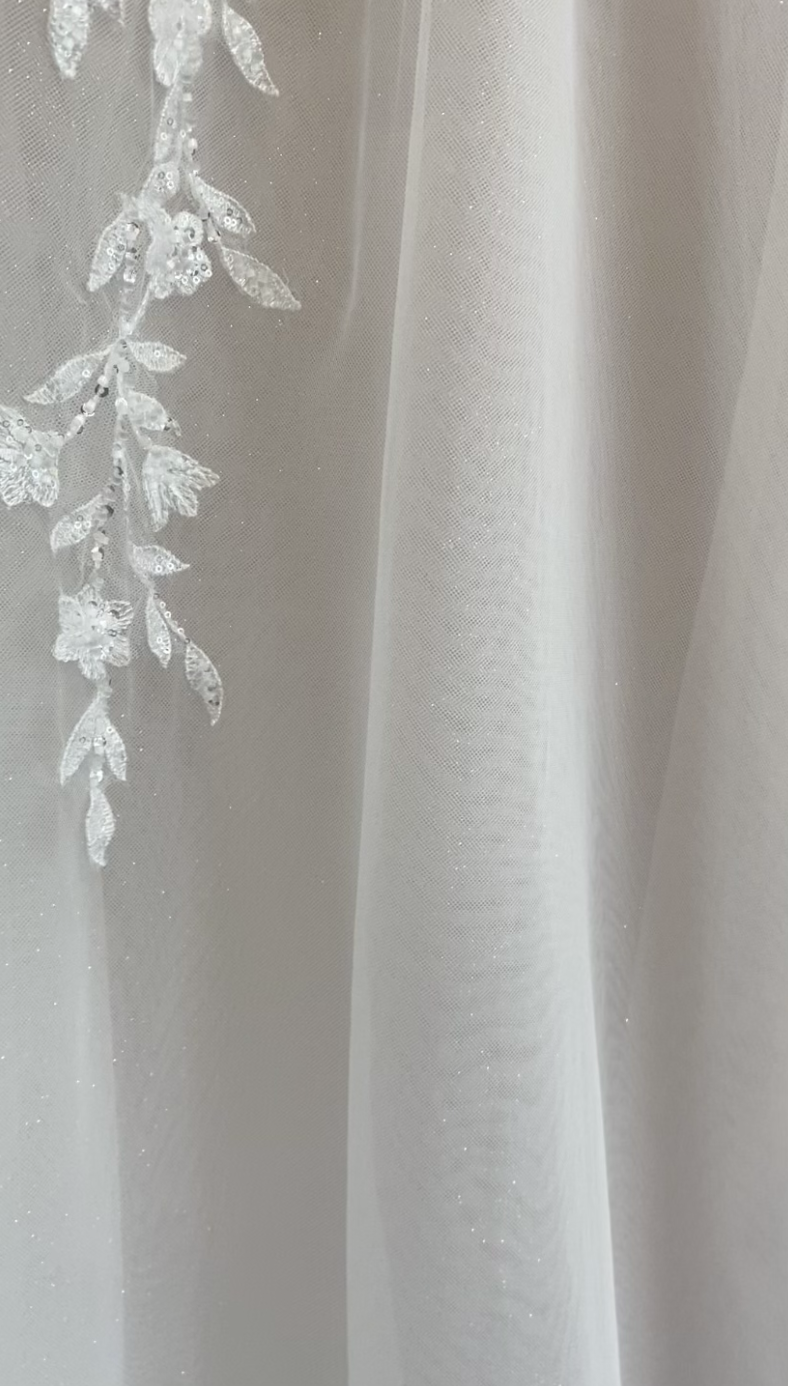
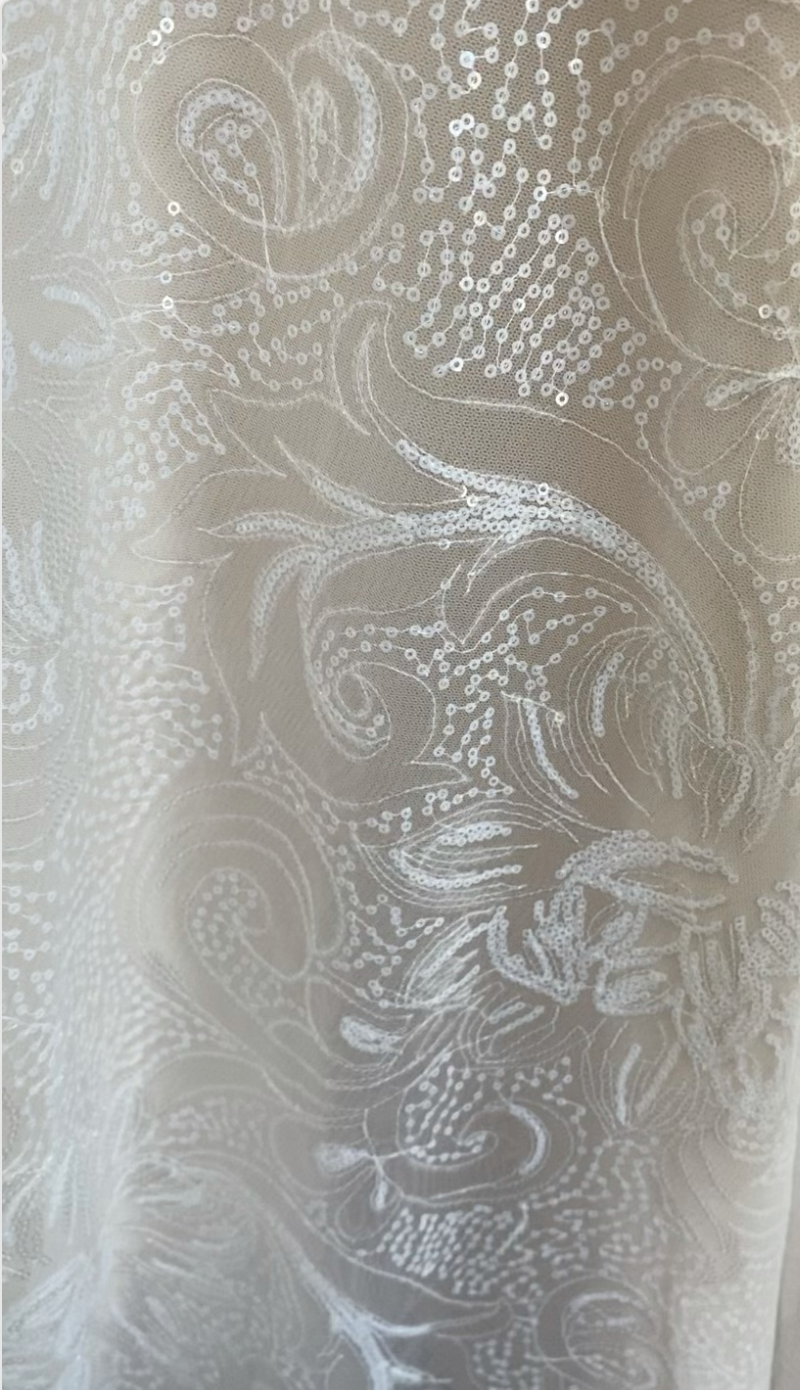

Lovely ethereal sheer sleeves or a beautiful bow tied in back can be the perfect tulle accessory pieces! Also gorgeous with a glitter effect, sequined, or adorned with lace appliques.
SILK
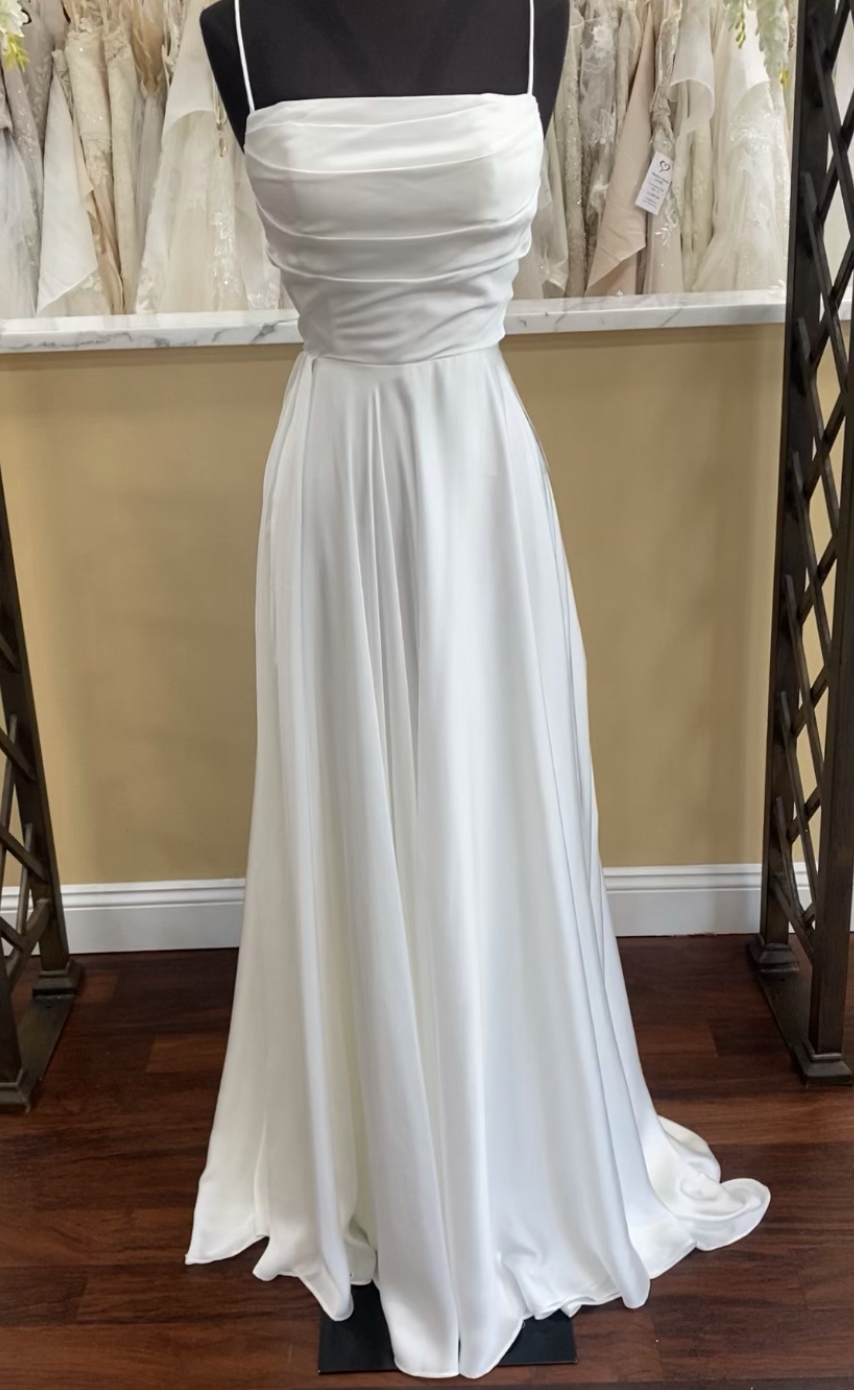
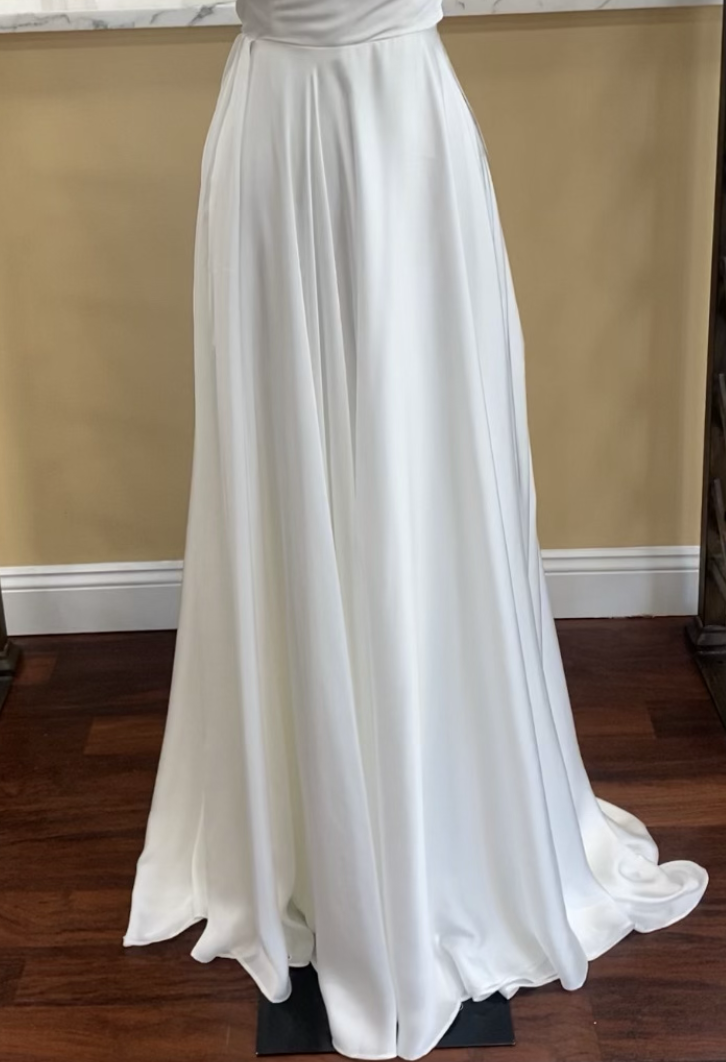
Silk fabrics are made of natural fibers sourced from silkworm cocoons, and has a luxurious shine. A expensive and luxury fabric, silk is a popular choice for brides wanting elegance and sophistication.
There are different types of silks that make for exquisite wedding dresses. Like charmeuse, there is also silk satin that is glossy and luxurious, Mikado that is stiffer with a lovely sheen, Duchesse satin, and Shantung known for its ‘imperfections’.
Silk dresses are typically plain with details of buttons, bows, wraps, and sleeves.
LACE
Standing the test of time, lace is one of the most popular wedding fabrics and has been used in wedding gowns for centuries. Lace fabric is normally used as an overlay atop another fabric (such as charmeuse or stretch jersey) giving it a highly detailed accent that is perfect for a classic or boho wedding gown.
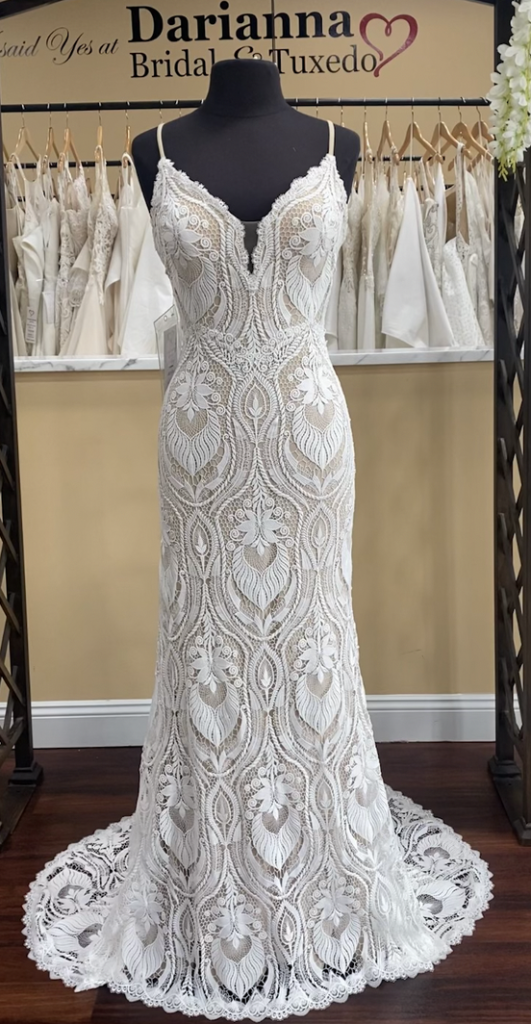
Classic lace styles are named after the city in which they originated, with Chantilly, Alençon, Brussels, and Venice among the most popular types. The intricate patterns today are extraordinary. The details in these designs lend different vibes and can also be layered, beaded, sequined, or plain.
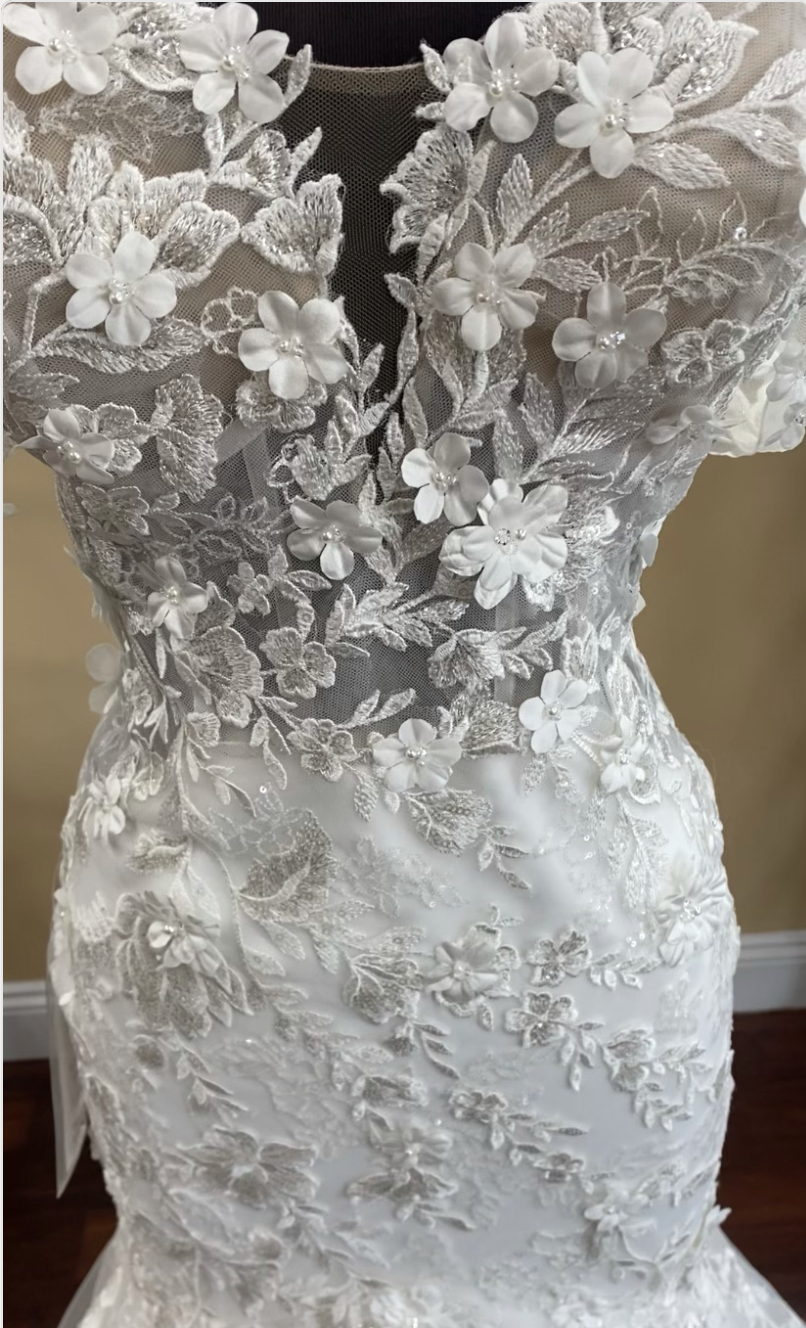
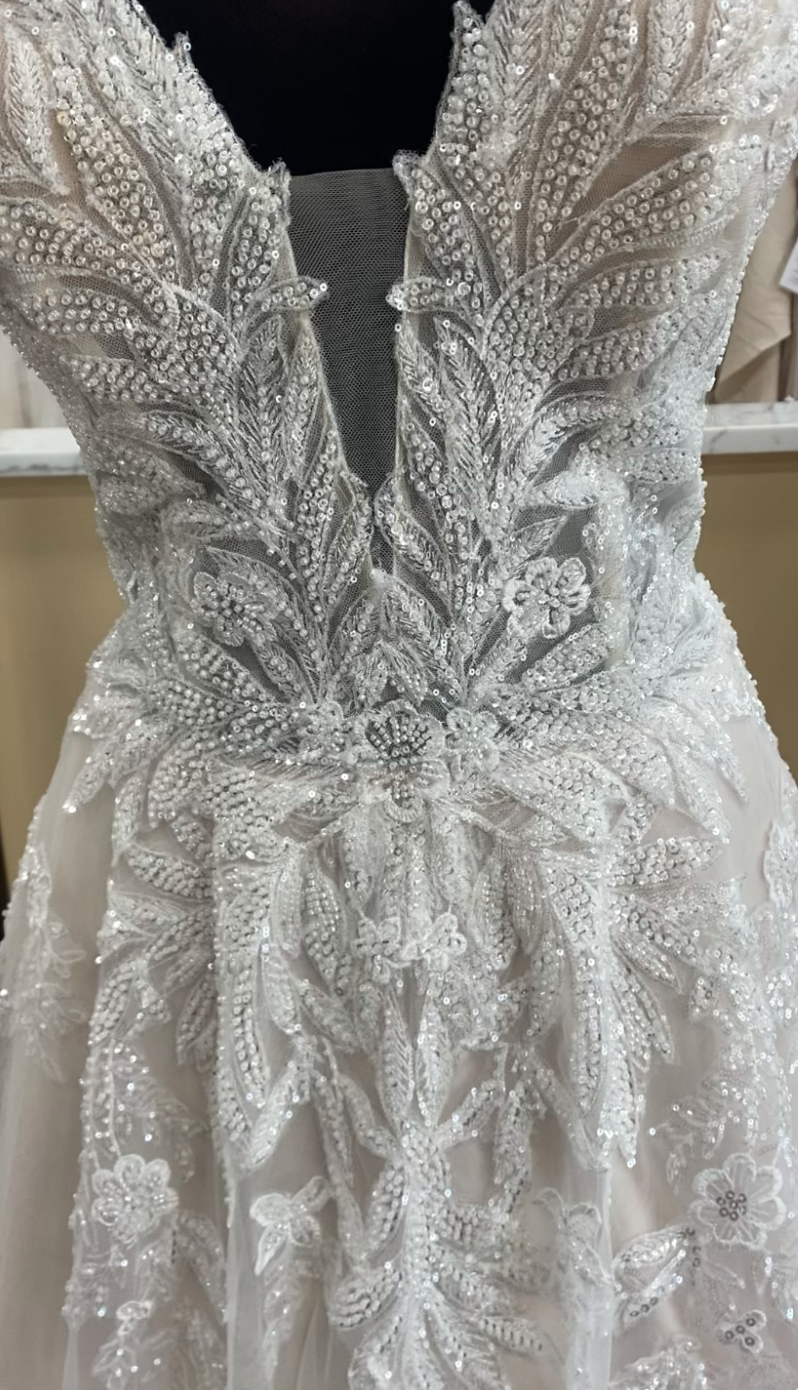
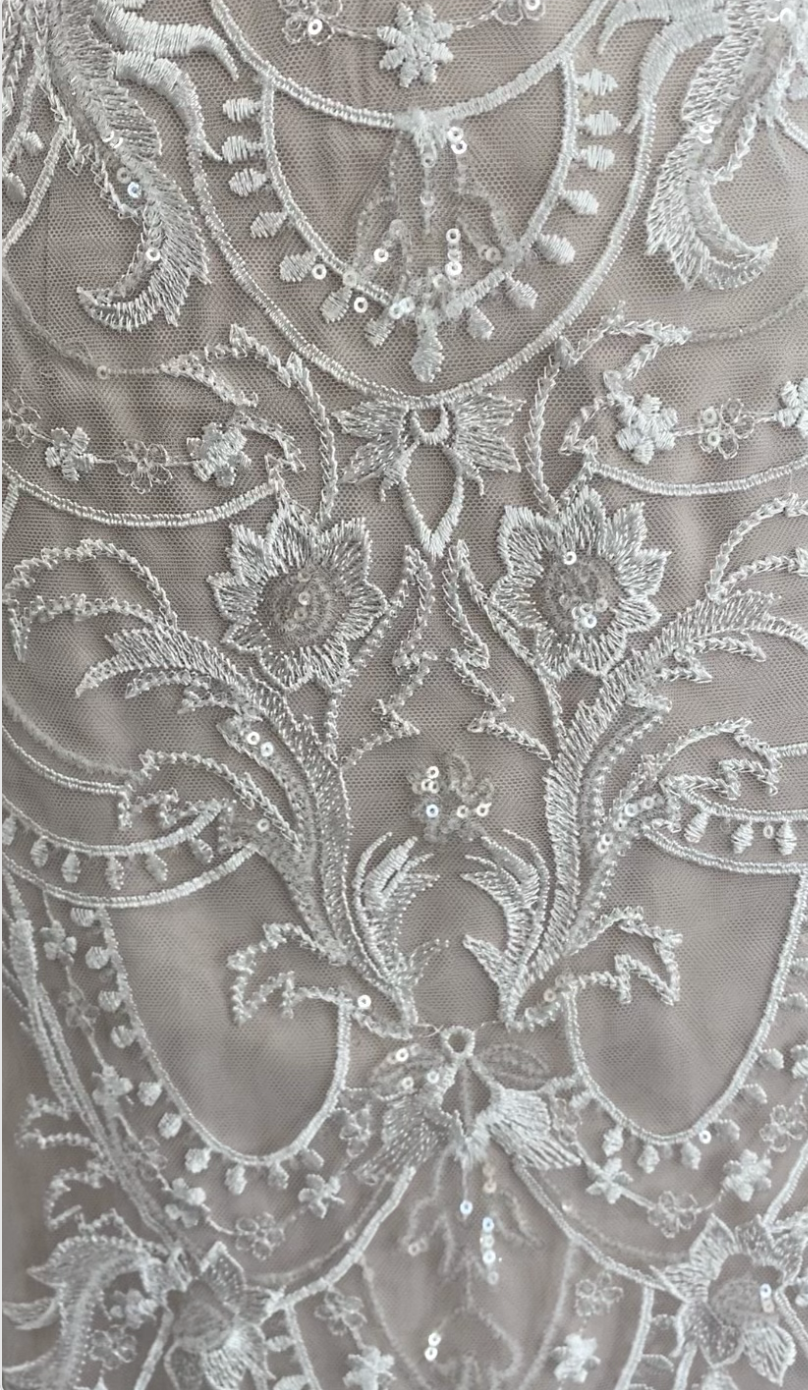
Personal Preference
Although being educated about fabric types is important for any bride choosing her gown, it’s also important to try a variety of dresses on to see how they not only look, but feel on you. Take your fabric questions to your bridal store. Make sure included in your wedding dress shopping experience is a quick education on these most common fabrics. The stylist will be able to show you to see which one you like, and which one will work with your theme and season.
Have a question about different types of fabrics? Contact us and we will answer with a blog just for you!

